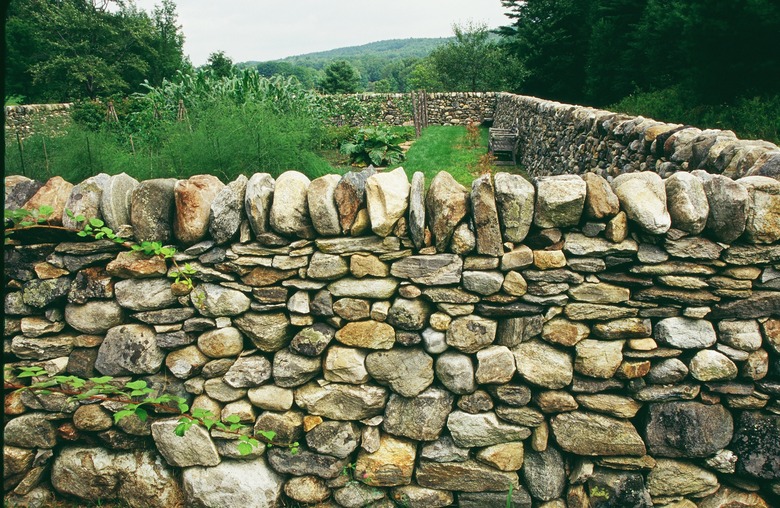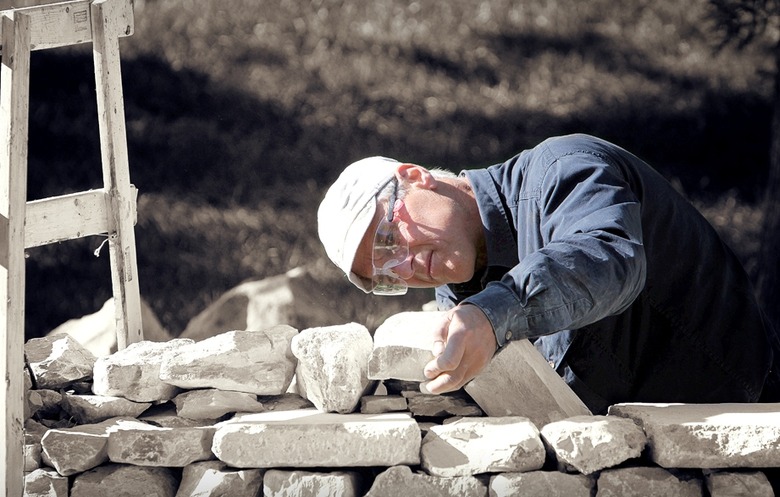How To Build A Dry Stone Wall
Dry stone walls are built without mortar, using techniques that are almost as old as humankind. Basically, you stack stones together, shimming and packing them to balance their weight and position. Although that sounds simple — and in many ways it is — building dry stone walls is not without challenges.
Stone is heavy, and working with it requires patience. You'll probably have to move each stone several times as you gather your materials and then shape the wall. The work may not be complicated, but it can be frustrating.
So why join the legions of "wallers" — builders of dry stone walls? Your answer may be practical: A dry stone wall can be functional, durable, and naturally beautiful. Depending on the source of the materials, it can be economical, too. Or, your answer may be visionary: Dry stone techniques put the laws of nature — particularly gravity — on your side. A well-built stone wall can stand as long as anything made by humans.
"One of the best learning experiences someone can have is to work for an hour or so, recognize the work's faults and then take it apart and start over."
Dan Snow, assemblage artist and author of "In the Company of Stone"
Proof of the durability of dry stone walls winds across New England and the Mid-Atlantic states, crops up in California and Kansas, and covers Tennessee and Kentucky. The structures go by different names in different regions. In parts of New England, they're known as rock walls; in Tennessee and Kentucky, they're called rock fences. But by any name and in any location, dry stone walls have at least one thing in common: they are held together by nothing more than their own weight. Many have stood for hundreds of years in the United States and some for thousands of years in the U.K., monuments to the craftsmanship and determination of their builders.
Despite this durability, destruction threatens some historical dry stone structures. The Dry Stone Conservancy (DSC), a 501(c)3 organization located in Lexington, Kentucky, is dedicated to preserving dry-laid stone structures and promoting the craft of dry stone masonry. Jane Wooley, the DSC Restoration Manager, says dry stone structures are being dismantled to make room for progress of all sorts.
"Although stone walls are part of our cultural heritage," Wooley said, "they do stand in the way of modern development. Road widening projects take them down. Consolidation of fields for farmers take them down. Land development can take them down."
Wooley points out, however, that dry-laid stonework is recyclable. It can be taken apart and moved away from a road project or fit into a subdivision redevelopment, but this depends on access to skilled workers.
"Soon after our organization started in the mid 1990s, we discovered that preservation was only a piece of the picture," Wooley said. "You need to develop a skilled workforce that knows how to do dry-laid stone properly. We offer workshops for beginners, as well as advanced workshops. We also have a process for testing and certifying dry stone masons."
Dan Snow, an experienced waller and author of "Listening to Stone" and "In the Company of Stone," believes stone walls have value at any point in their history, whether they're freshly made or have been standing for thousands of years. Snow has been certified a mastercraftsman with the Dry Stone Walling Association (DSWA) of Great Britain. He also teaches the craft and examines for the DSWA Crafstman Testing Program.
"We need to do all we can to preserve walls, but it's not necessary that they remain in some state of amber, exactly as they were 1,000 years ago or 100 years ago or even yesterday," Snow said. "Preservation is part of a continuum of the craft, which includes restoration. There are good reasons to repair and rebuild historical works. There are good reasons to make new work. And, sometimes, there is good reason to use stone that has been used before to make new things."
Like any structure, a dry stone wall needs a solid, level foundation. To start, you dig a trench as wide as the intended wall and 6 to 12 inches deep. Depending on the soil composition, you may need to compact the earth. In regions with heavy soil or high levels of clay, compaction is not necessary. If you live in a region where frost heave is significant, you need to add a layer of compactable gravel, but in most climates, that's not necessary, either. Dry stone walls flex, so they can withstand a fairly substantial amount of movement as the ground freezes and thaws.
Dry stone walls are composed of two faces supported by fill in the center. Stones must be carefully arranged to support the weight of the wall. But, Snow says, walling success is much a matter of trial and error. "One of the best learning experiences someone can have is to work for an hour or so, recognize the work's faults and then take it apart and start over," he said. "There's a lot of satisfaction in improving a piece using basically the same stones but placing them to fit better and provide a stronger structure."
"It's an activity anyone can do. I encourage people to get physical and move stone around. It's a great pastime: a craft and a skill and a professional occupation."
Four Principles of Dry Stone Work
Four Principles of Dry Stone Work
The Dry Stone Conservancy offers three to five weekend workshops each spring and fall. At these workshops, participants learn the four basic principles of dry stone work:
• Lay each stone with its length running into the wall rather than along the face. • Place your joints so each successive layer of stone is covering up the joints of the layer below. • Pack from the inside. Lay up the face stones and then place stones as possible inside the wall. Shim and pack every stone before you go on to the next layer. • Lay your stone as level as possible. Use levelers and risers and pins and wedges to level them.
For more information on preservation of dry stone walls or the DSC's workshops, visit www.drystone.org.

